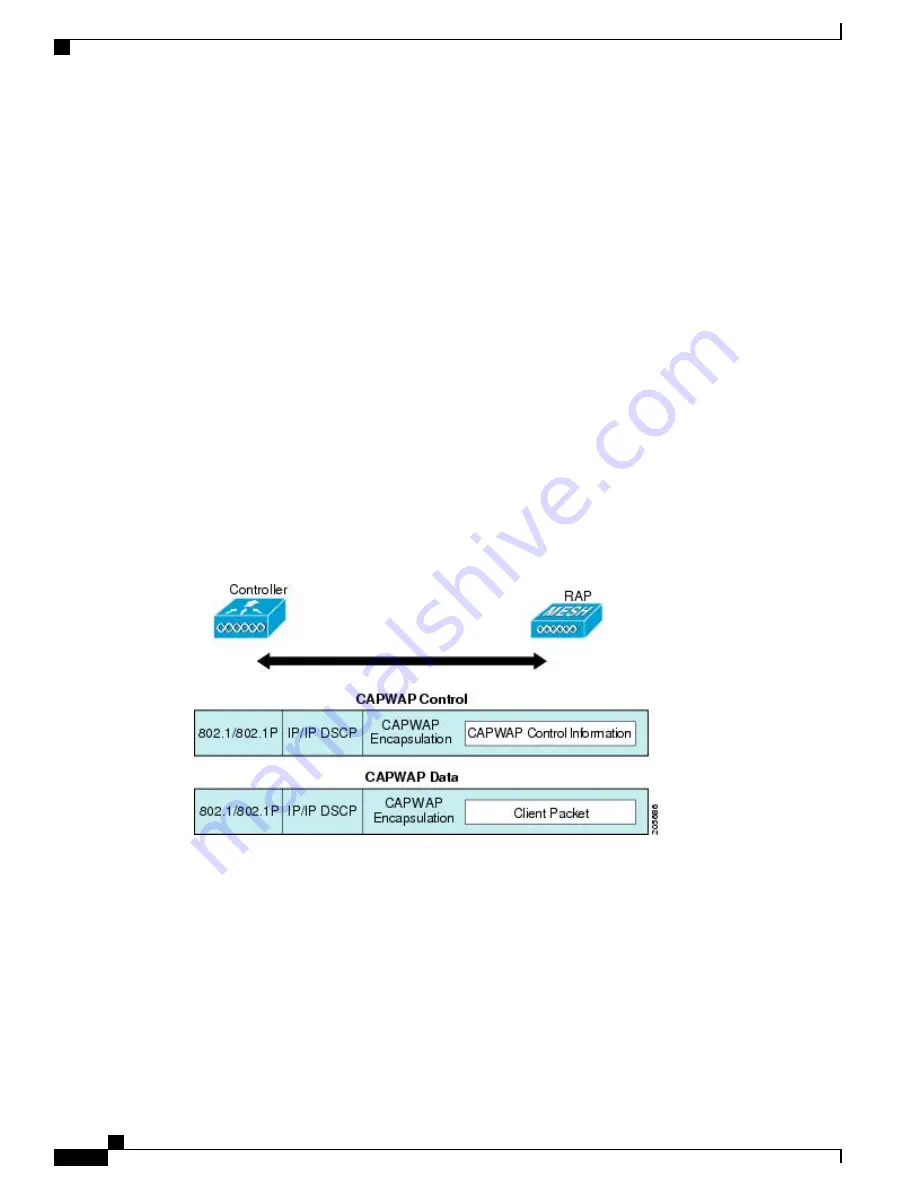
• Based on TOS / DiffServ settings of packets
• Based on Layer 2 or Layer 3 access lists
• Based on VLAN
• Based on dynamic registration of devices (IP phones)
AP1500s, with Cisco controllers, provide a minimal integrated services capability at the controller, in which
client streams have maximum bandwidth limits, and a more robust differentiated services (diffServ) capability
based on the IP DSCP values and QoS WLAN overrides.
When the queue capacity has been reached, additional frames are dropped (tail drop).
Encapsulations
Several encapsulations are used by the mesh system. These encapsulations include CAPWAP control and
data between the controller and RAP, over the mesh backhaul, and between the mesh access point and its
client(s). The encapsulation of bridging traffic (noncontroller traffic from a LAN) over the backhaul is the
same as the encapsulation of CAPWAP data.
There are two encapsulations between the controller and the RAP. The first is for CAPWAP control, and the
second is for CAPWAP data. In the control instance, CAPWAP is used as a container for control information
and directives. In the instance of CAPWAP data, the entire packet, including the Ethernet and IP headers, is
sent in the CAPWAP container.
Figure 75: Encapsulations
For the backhaul, there is only one type of encapsulation, encapsulating mesh traffic. However, two types of
traffic are encapsulated: bridging traffic and CAPWAP control and data traffic. Both types of traffic are
encapsulated in a proprietary mesh header.
In the case of bridging traffic, the entire packet Ethernet frame is encapsulated in the mesh header.
Cisco Mesh Access Points, Design and Deployment Guide, Release 7.3
172
OL-27593-01
Connecting the Cisco 1500 Series Mesh Access Points to the Network
Configuring Voice Parameters in Indoor Mesh Networks






























